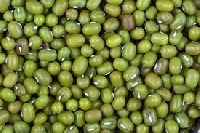
yellow gram
Yellow Gram is more commonly known as Chana when its outer hull has been split, this pulse is a mainstay of Indian and Pakistani cuisine. We mainly provide Tanzanian yellow gram. Tanzania produces around 30,000 tons per annum, the main production areas being Mwanza and Shinyaga regions. HOPL procures yellow gram from Mwanza and Shinyanga region.
...more
Sesame Seed
The Sesame seed is amongst the oldest seeds to be known by mankind. It origins are from Asia or East Africa and now grows in most tropics, sub tropics and southern temperas around the world. When crushed sesame seed oil is produced and used as a salad or cooking oil. Whole sesame is used widely in Middle Eastern and Asian cuisine, as well as European and North American cuisine. World production of sesame seeds is estimated at nearly 2.6 million tones, of which 70% in consumed by producers itself. Major producers include China, India, Myanmar, Nigeria, Ethiopia, Tanzania, Mozambique, Burkina Faso and Guatemala while Japan is the world's largest importer.
...more
Pigeon Peas
Pigeon peas are more commonly known as arhar, red gram, toovar/toor, togari, kandi, gandul, guandul, congo pea, gungo pea, gunga pea, and no-eye pea. Its origins are said to be in Asia over 3000 years ago, from where it spread to East Africa. India, East Africa and Central America are the world's largest producers. In India this pulse is one of the most popular and nutritionally important. They contain high levels of protein. Tanzania's main production areas are Arusha, Bariadi and Nachingwea regions. Tanzania's production stands at 60,000 tons. HOPL procures pigeon pease from Malawi, Mozambique, Kenya, Tanzania and Myanmar/Burma.
...more
Peanut(Ground nut)
The peanut, or groundnut (Arachis hypogaea), is a species in the legume or "bean" family (Fabaceae). The peanut was probably first cultivated in the valleys of Peru. Peanuts are known by many other local names such as earthnuts, ground nuts, goober peas, monkey nuts, pygmy nuts and pig nuts. Peanuts have many uses. They can be eaten raw, used in cooking & various ethnic and modern recipes, made into solvents and oils, used in make-up, medicines, textile materials, peanut butter, as well as many other uses. Peanuts are also used in a wide variety of other areas, such as cosmetics, nitroglycerin, plastics, dyes and paints.
...more
green mung
The mung bean is a native seed to India. Mung beans are most commonly used in China as well as in Japan, Korea, India and Southeast Asia. Generally, green mung can be eaten as whole or as bean sprouts. The starch of the mung bean is also used to make jellies and noodles. Production and Exports begin in April and continue up to June. HOPL procures green mung from Australia, Tanzania, Mozambique and Myanmar.
...more
Green Moong
The mung bean is a native seed to India. Mung beans are most commonly used in China as well as in Japan, Korea, India and Southeast Asia. Generally, green mung can be eaten as whole or as bean sprouts. The starch of the mung bean is also used to make jellies and noodles.Production and Exports begin in April and continue up to June. HOPL procures green mung from Australia, Tanzania, Mozambique and Myanmar.
...more
Cotton
Cotton is a soft, fluffy staple fiber that grows in a boll, or protective capsule, around the seeds of plant of the genus Gossypium. The fiber is almost pure cellulose. The botanical purpose of cotton fiber is to aid in seed dispersal. Cotton has been spun, woven, and dyed since prehistoric times. It clothed the people of ancient India, Egypt, and China. Hundreds of years before the Christian era, cotton textiles were woven in India with matchless skill, and their use spread to the Mediterranean countries. The use of cotton for fabric is known to date to prehistoric times; fragments of cotton fabric dated from 5000 BCE have been excavated in Mexico and Pakistan. Although cultivated since antiquity, it was the invention of the cotton gin that so lowered the cost of production that led to its widespread use, and it is the most widely used natural fiber cloth in clothing today. Current estimates for world production are about 25 million tons annually, accounting for 2.5% of the world's arable land. India is the world's 2nd largest producer and exporter of cotton, but most of this is used domestically and remains imported cotton from various countries of world, though it's in a huge amount. We are one of the leading manufacturer, trader and exporters of Raw Cotton from India to various countries like China, Indonesia, Bangladesh, Vietnam, Thailand, Taiwan etc. We are located in Gujarat mainly where the world famous Shankar – 6 type cotton grows. We mainly deal in Shankar - 6 and J – 34 Cotton.
...more
Cloves
Cloves (Syzygium aromaticum) are the aromatic dried flower buds of a tree in the family Myrtaceae. Cloves are native to the Maluku islands in Indonesia and used as a spice in cuisines all over the world. Cloves are harvested primarily in Indonesia, India, Madagascar, Zanzibar, Pakistan, and Sri Lanka. The flower buds are at first of a pale color and gradually become green, after which they develop into a bright red, when they are ready for collecting. Cloves are harvested when 1.5–2 cm long, and consist of a long calyx, terminating in four spreading sepals, and four unopened petals which form a small ball in the center. Cloves can be used in cooking either whole or in a ground form, but as they are extremely strong in test, they are used in limited quantity. Cloves have historically been used in Indian cuisine. it is used in almost all rich or spicy dishes as an ingredient of a mix named garam masala. It has medical uses also. We supply Madagascar origin cloves at the most.
...more
Pulses

Oil Seeds
Be first to Rate
Rate ThisOpening Hours